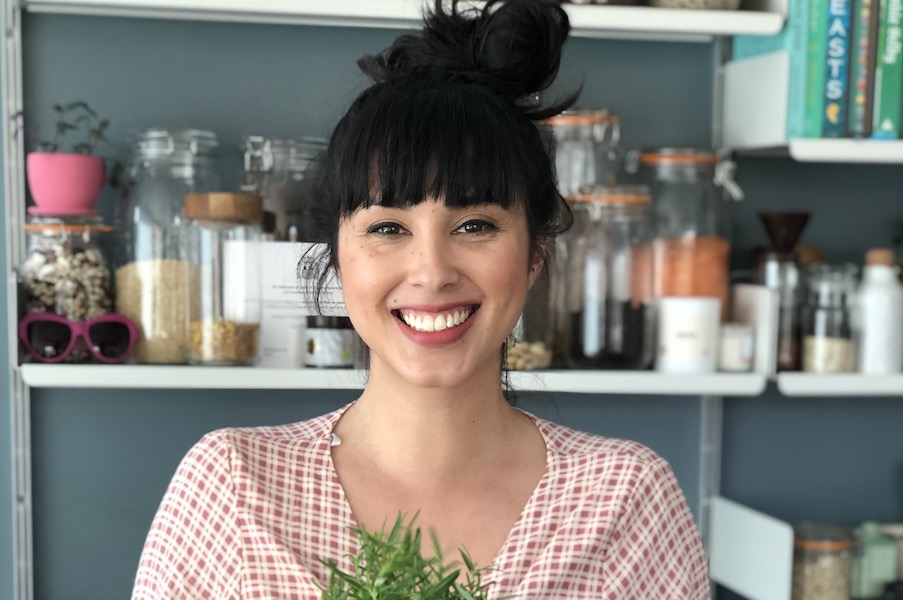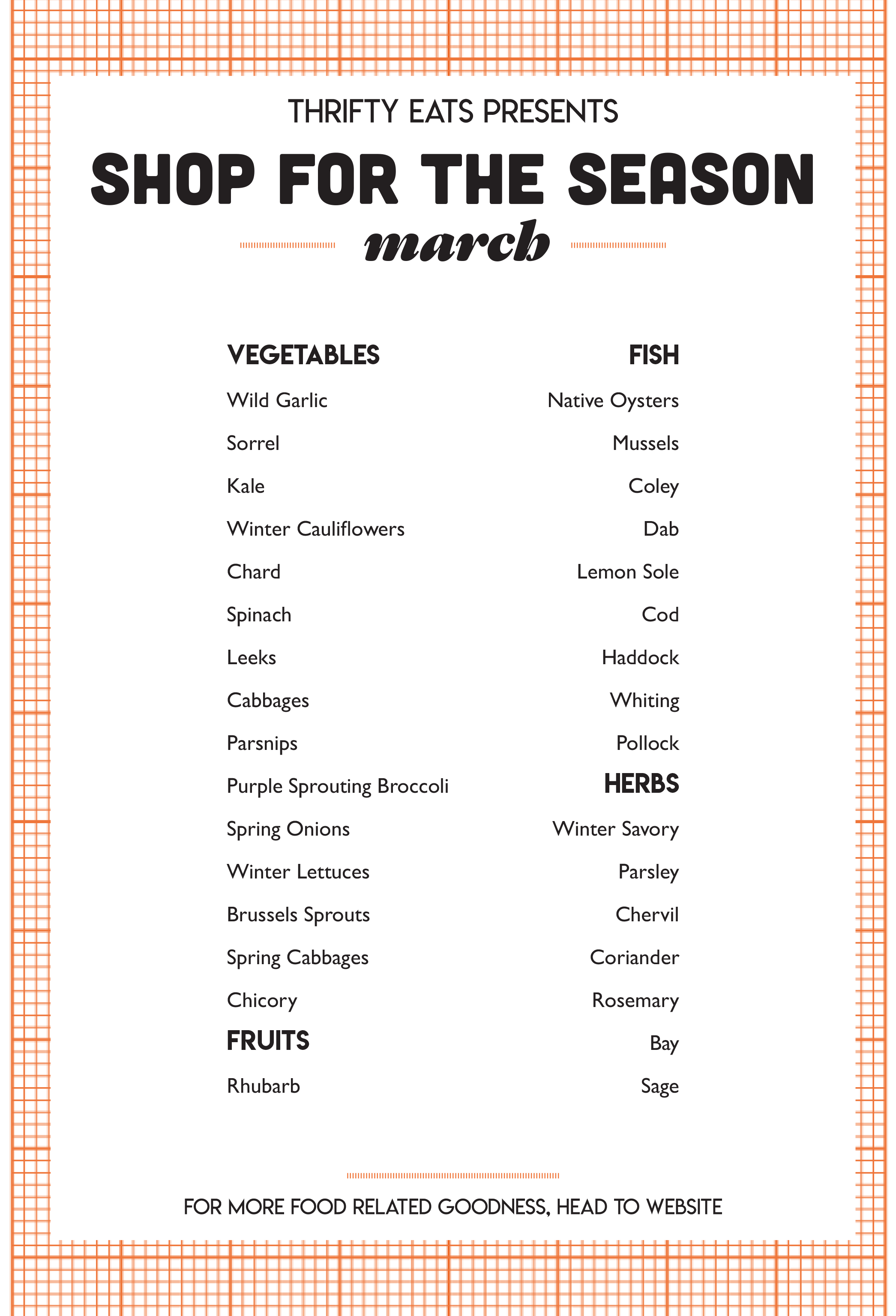The sustainable chef and food writer on her new book Eat Green, loving your leftovers and batch cooking

Melissa Hemsley rose to fame back in 2010 as one half of the healthy eating sister act Hemsley + Hemsley, best known for courgetti, bone broth and cauli rice. The duo’s first cookbook, The Art of Eating Well (2014) became a bestseller, they opened a cafe in Selfridges and even had their own Channel 4 TV show, Eating Well With Hemsley and Hemsley.
In 2017, the sisters decided to embark on individual projects and Melissa wrote her first solo book Eat Happy (2018), with 120 quick, cheap and easy recipes. Now, the self-taught cook has a new book out, Eat Green and this time, vegetables are in the spotlight (although meat and fish are featured too). There’s also a real focus on tackling food waste and using local produce. Melissa describes it as a guide on how to “get the most out of food, be frugal, be thrifty – but in a positive way”. We caught up with her to find out more.
What can people expect from Eat Green?
I’m a big believer in flexible eating (some coin it flexitarianism) and that’s what the book is about. Balance is really the key here! If you want to eat in a way that’s more planet-friendly but you don’t want to cut out meat, that’s okay. I wrote Eat Green with this in mind because I realise that for some, cutting out animal products isn’t sustainable or realistic. There are many different ways that we can make greener food choices that feel right for us and more importantly, which we can sustain in the long term. That’s why I’ve stuffed Eat Green with flexi tips, waste-cutting advice and easy to adapt, feel-good recipes to give you the confidence to take these small steps each time you cook.
What inspired you to write the book?
I’m incredibly lucky to have an amazing community of people who give me their feedback and share how they cook and eat with. It got me thinking – lots of us are feeling overwhelmed and anxious about the state of our planet and want to make food choices that can make a positive difference.
This book is two years in the making and it’s the result of many more years of asking the questions: How can I eat in a way that’s sustainable? How do I eat more seasonally? What can I do about cutting my food waste? I wanted to write a cookbook that would answer all of those questions and more. Over my years of cooking and eating, I’ve experimented, researched and challenged myself over and over again. It’s been a big learning curve and it’s still ongoing – I’m not claiming to be 100% perfect! I know how difficult it can be to make greener choices when we’re pushed for time and money. That’s why I’ve crammed the book with over 100 time-saving, stress-free recipes.
Lots of us are feeling overwhelmed and anxious about the state of our planet and want to make food choices that can make a positive difference.
What can people do to embrace a more eco-friendly way of eating?
Start by making changes that feel right for you. That could be switching up the variety of vegetables you eat (the more the merrier!) and embracing more local, seasonal produce at the centre of our plate a few times a week. It could also mean eating less but better quality meat and fish. I give my tips and recipes for choosing the underloved and less fashionable cuts that often get wasted. Another key thing is being flexible in how we use up food, finding new ways to shop from our fridge and cupboard so that we can cut food waste and plastic packaging.
What sort of food did you eat growing up?
My Filipino mum is a great cook – nothing fancy and no recipes, just good home-cooked food. She was, and still is, the queen of leftovers. She taught me that the best cooks don’t waste a thing. She won’t go out food shopping until she’s cleared the fridge first and that’s a key lesson I learned when I started to cook for myself. I’ve definitely taken on mum’s waste-free approach; reinventing leftovers, raiding my fridge and seeking out in-season foods, which have dictated how I cook – simple and seasonal, feel-good and delicious. Mum’s always right!
Aside from your mum, who has influenced your approach to food?
There’s a bunch of inspirational food industry game changers out there already making big waves in the world of food and sustainability. Guy Singh-Watson is one of them – he’s an incredible inspirational farmer and founder of Riverford Organics (who is responsible for thousands and thousands in the UK signing up to organic seasonal veg and fruit boxes straight from farmers!) Not to mention chefs like Skye Gyngell, Hugh Fearnley-Whittingstall, Dan Barber, Doug McMaster, I could go on…
What are your top tips for people who want to cut back on their food waste but aren’t sure where to begin?
Eating for the planet isn’t about overhauling our entire kitchen and suddenly being 100% sustainable and 100% perfect all the time. Focusing on small, achievable daily changes is the best way we can make a long term impact that’s sustainable and enjoyable. You can start small and you can start today. Cook a simple recipe from scratch. Grab a bowl and as you cook, throw in everything you’d normally put in the bin from veg scraps to the leftovers at the end of the meal. Could you make a stock with those peelings? Could you blitz those extra greens into a pesto? Could you make extra and freeze the rest for a rainy day?
Eating for the planet isn’t about overhauling our entire kitchen and suddenly being 100% sustainable and 100% perfect all the time.
What’s your advice for people who want to make more planet-friendly choices but are concerned about costs?
Cook in big batches, divide it up into portions and freeze the extras for those busy midweek evenings when you haven’t got time to cook from scratch. If you don’t have a large amount of freezer space, do a weekly cook off (make a big pot of two recipes) then share half with a neighbour, friend or colleague. Once a week, they could do the same and together, you’ve got four different types of home cooked no waste dinners to enjoy. Win win!
Saving your food from going in the bin is also a great way to stick to a budget. Do this by learning how to cook more from your fridge and cupboards and adapting recipes to what you have in the fridge. Also, be inspired by the seasons; fruit and veg are more affordable when they’re in season, plus they taste better. In the book, I’ve included loads of tips on how to use up those bits and pieces that usually get thrown away, from herb stems and cheese rinds to lemon zests, to show you how to get the most flavour and nutrition from ingredients you’d usually chuck away.
Melissa’s kitchen staples
Dried lentils, tinned tomatoes, pasta and noodles: provide great bulk to a last minute dinner
A spice or herb mix: I always pick one up whenever I travel
Eggs: I always have them on the side
Onions, garlic, ginger: my Filipino mum says ANYTHING will be delicious with these three ingredients (you can keep ginger in the freezer too and grate it from frozen)
Butter, greens (could be any mix of chard, kale and cabbage), kimchi and sauerkraut: in the fridge
Check out Melissa’s Instagram for more eco-friendly tips and food waste fighting recipes.


